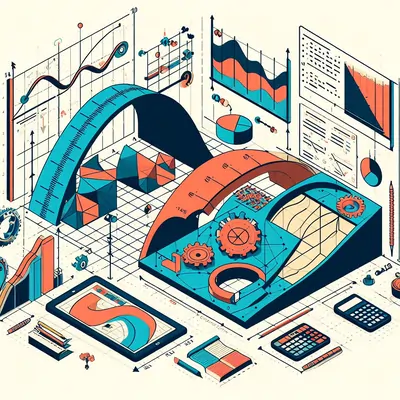Unveiling the Mathematical Tapestry: Riemannian Metrics and their Role in Defining Distances and Angles on Manifolds

In the intricate realm of differential geometry, one of the fundamental concepts that play a pivotal role is the Riemannian metric on a manifold. This abstract mathematical structure forms the basis for understanding distances and angles between vectors within the manifold. As university students delve into assignments and coursework, comprehending the nuances of Riemannian metrics becomes indispensable. In this comprehensive exploration, we will embark on a theoretical journey to unravel the essence of Riemannian metrics and illuminate their significance, particularly in the context of completing your differential geometry assignment in the realm of differential geometry.
Understanding Manifolds:
To grasp the concept of a Riemannian metric, it is imperative to first appreciate the notion of manifolds. In differential geometry, manifolds serve as locally Euclidean spaces. In simpler terms, they are spaces that, when viewed up close, resemble Euclidean spaces, allowing us to use calculus techniques. However, on a larger scale, these spaces can exhibit intricate topological features, making them versatile mathematical objects for studying various phenomena.
Riemannian Metrics: A Blueprint for Geometry:

At the heart of differential geometry lies the concept of a metric, which is a mathematical tool used to measure distances and angles. When this concept is extended to manifolds, we encounter Riemannian metrics. A Riemannian metric endows a manifold with a notion of distance and angle, essentially providing a geometric structure on an otherwise abstract space.
Mathematically, a Riemannian metric on a manifold M assigns, to each point on the manifold, an inner product on the tangent space at that point. This assignment varies smoothly across the manifold, capturing the geometric essence of the space.
The Role of Riemannian Metrics in Defining Distances:
In the context of manifolds, defining distances is not as straightforward as in Euclidean spaces. Riemannian metrics step in to bridge this gap. Consider a curve on the manifold connecting two points. The length of this curve is not simply the sum of infinitesimal displacements, as in Euclidean spaces, but is instead calculated using the Riemannian metric.
The metric provides a measure of the length of tangent vectors at each point, enabling the construction of an integral that accounts for the curvature of the manifold. This integral yields the geodesic distance between two points, representing the shortest path between them, considering the curvature of the manifold.
Angles Between Vectors: A Geometric Perspective:
While distances capture the "length" aspect of Riemannian metrics, these metrics also play a crucial role in defining angles between vectors. In Euclidean spaces, the dot product of vectors provides a simple and intuitive measure of the angle between them. Extending this idea to manifolds involves the Riemannian metric, which facilitates the definition of an inner product on the tangent space.
This inner product captures the angle between vectors at a given point on the manifold. As vectors vary across the manifold, so do their angles, allowing for a comprehensive understanding of the geometric structure. Moreover, the Riemannian metric ensures that this angle between vectors changes smoothly as one moves across the manifold, preserving the intrinsic geometry.
Applications in Differential Geometry and Beyond:
The profound implications of Riemannian metrics extend beyond the theoretical realm. In differential geometry, these metrics serve as a cornerstone for studying curvature, geodesics, and the overall geometry of manifolds. The famous Gauss-Bonnet theorem, which relates the curvature of a manifold to its topology, exemplifies the deep connection between Riemannian metrics and broader mathematical concepts. Let’s consider these applications in detail.
Applications in Differential Geometry:
- Studying Curvature: Riemannian metrics play a pivotal role in understanding the curvature of manifolds. Curvature is a fundamental geometric property that describes how a curve or surface deviates from being a straight line or a flat plane. The curvature of a manifold is intricately tied to the Riemannian metric, as it influences the lengths of curves and the angles between vectors. By analyzing the curvature, mathematicians gain insights into the intrinsic geometry of the manifold.
- Geodesics and Shortest Paths: Geodesics, the analogues of straight lines on curved surfaces, are integral to Riemannian geometry. Riemannian metrics enable the definition of geodesic paths, which are the shortest paths between points on a manifold. Understanding geodesics is crucial in various applications, including navigation systems and robotics, where finding the most efficient path between two points is essential.
- Gauss-Bonnet Theorem: The Gauss-Bonnet theorem is a profound result that establishes a deep connection between the curvature of a manifold and its topology. Riemannian metrics provide the mathematical framework necessary for proving and applying the Gauss-Bonnet theorem. This theorem has far-reaching implications, influencing research not only in pure mathematics but also in theoretical physics and engineering.
Applications in Physics:
- General Relativity: Riemannian metrics are foundational in the realm of general relativity, Albert Einstein's theory of gravity. In this theory, spacetime is modelled as a four-dimensional manifold equipped with a Riemannian metric. The curvature of spacetime, influenced by the distribution of matter and energy, is described by the metric. Thus, Riemannian metrics serve as the mathematical language to articulate how gravity shapes the fabric of the universe.
- Gravitational Lensing: The curvature of spacetime, as described by Riemannian metrics, has observable consequences, one of which is gravitational lensing. Massive objects, like galaxies, bend the path of light as it travels through curved spacetime. Riemannian metrics provide the tools to calculate and predict the extent of this bending, allowing astronomers to observe distorted images of distant objects.
Applications in Computer Science:
- Machine Learning and Optimization: In the realm of machine learning, datasets are often represented as points in high-dimensional spaces. These spaces may exhibit non-Euclidean structures, and Riemannian metrics offer a framework to analyze and navigate these complex geometries. Algorithms that utilize Riemannian metrics are employed in tasks such as manifold learning, where the goal is to uncover the underlying structure of the data.
- Non-Euclidean Data Spaces: Many real-world datasets don't conform to the simple, linear structures of Euclidean spaces. Riemannian metrics allow for the development of algorithms tailored to these non-Euclidean data spaces. This is particularly relevant in fields like computer vision, natural language processing, and pattern recognition, where the inherent complexity of data requires sophisticated mathematical tools for analysis and optimization.
Conclusion:
In the intricate tapestry of differential geometry, the concept of a Riemannian metric emerges as a fundamental thread, weaving together the notions of distance and angle on manifolds. University students looking to complete their maths assignments in this domain are encouraged to delve into the theoretical underpinnings of Riemannian metrics, recognizing their role as mathematical tools that breathe life into abstract spaces. Therefore, it is evident that Riemannian metrics not only provide a means to measure distances and angles but also serve as a gateway to understanding the profound interplay between geometry and topology. Armed with this knowledge, students can embark on a journey of mathematical discovery, unlocking the secrets of curved spaces and paving the way for applications that extend far beyond the confines of the academic realm.